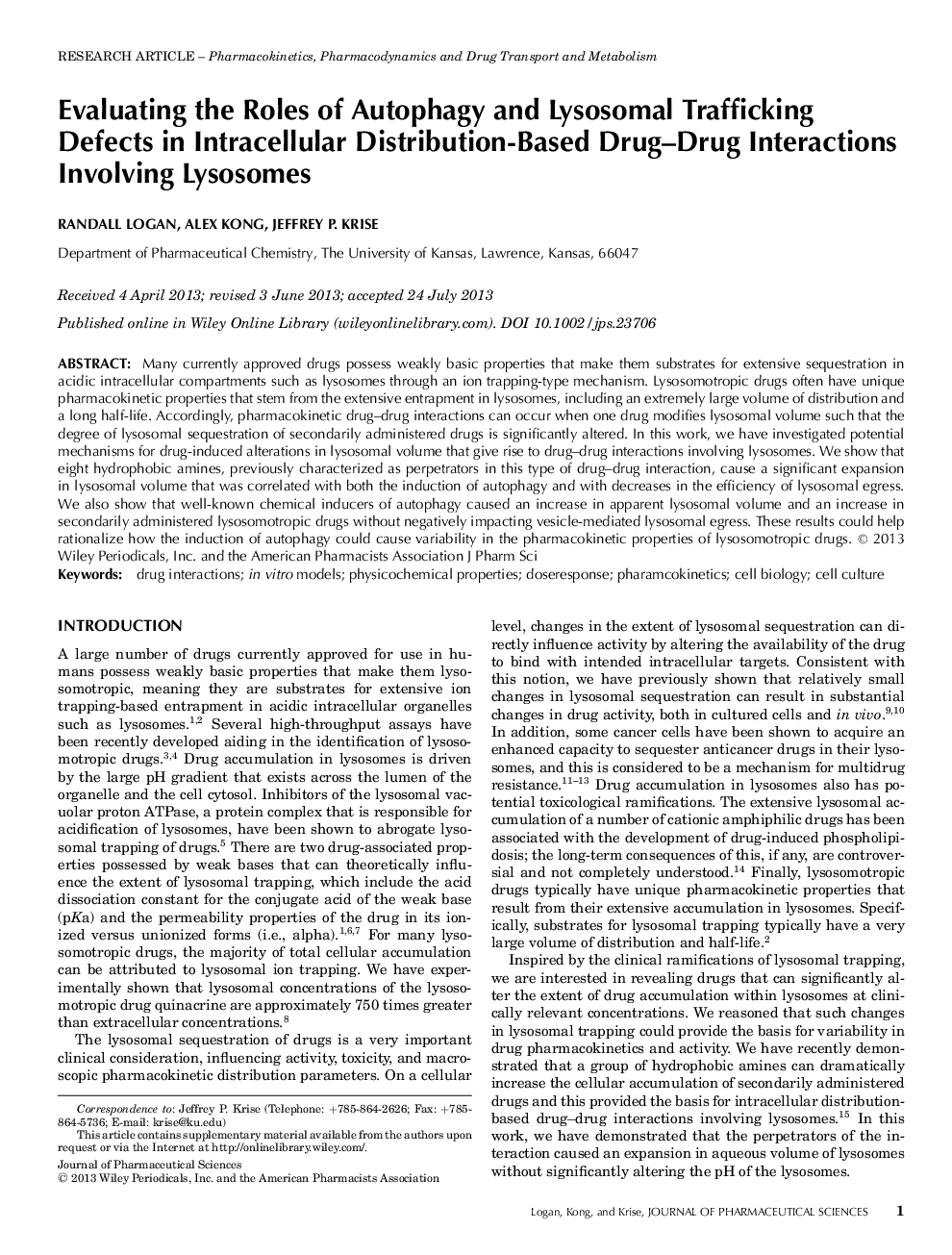| Article ID | Journal | Published Year | Pages | File Type |
|---|---|---|---|---|
| 2484802 | Journal of Pharmaceutical Sciences | 2013 | 8 Pages |
Abstract
Many currently approved drugs possess weakly basic properties that make them substrates for extensive sequestration in acidic intracellular compartments such as lysosomes through an ion trapping-type mechanism. Lysosomotropic drugs often have unique pharmacokinetic properties that stem from the extensive entrapment in lysosomes, including an extremely large volume of distribution and a long half-life. Accordingly, pharmacokinetic drug-drug interactions can occur when one drug modifies lysosomal volume such that the degree of lysosomal sequestration of secondarily administered drugs is significantly altered. In this work, we have investigated potential mechanisms for drug-induced alterations in lysosomal volume that give rise to drug-drug interactions involving lysosomes. We show that eight hydrophobic amines, previously characterized as perpetrators in this type of drug-drug interaction, cause a significant expansion in lysosomal volume that was correlated with both the induction of autophagy and with decreases in the efficiency of lysosomal egress. We also show that well-known chemical inducers of autophagy caused an increase in apparent lysosomal volume and an increase in secondarily administered lysosomotropic drugs without negatively impacting vesicle-mediated lysosomal egress. These results could help rationalize how the induction of autophagy could cause variability in the pharmacokinetic properties of lysosomotropic drugs. © 2013 Wiley Periodicals, Inc. and the American Pharmacists Association J Pharm Sci 102:4173-4180, 2013
Keywords
Related Topics
Health Sciences
Pharmacology, Toxicology and Pharmaceutical Science
Drug Discovery
Authors
Randall Logan, Alex Kong, Jeffrey P. Krise,
